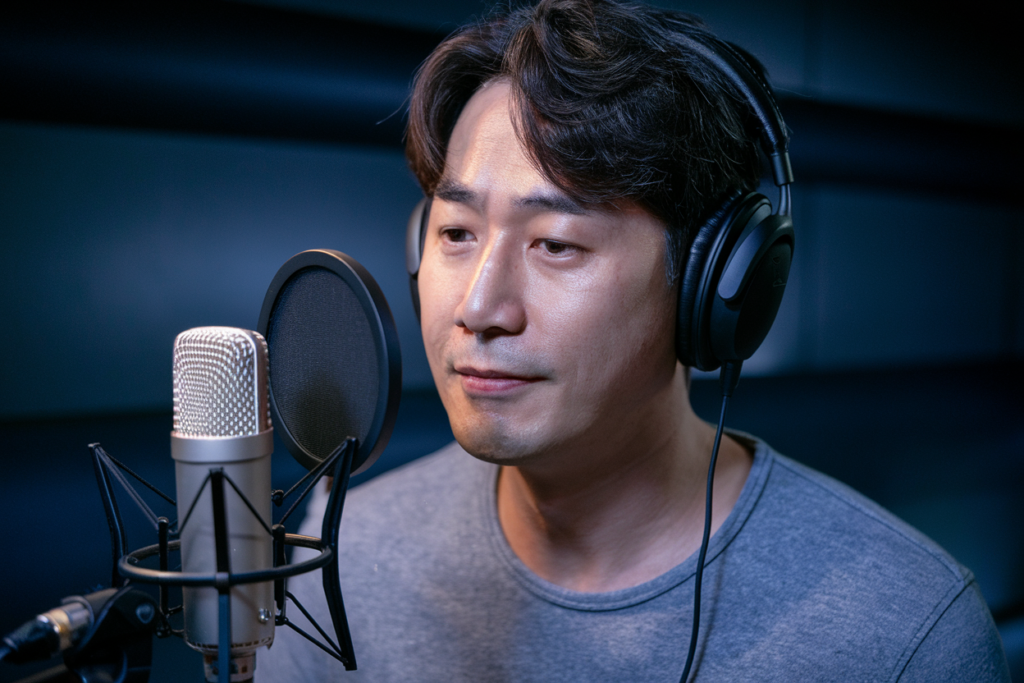Key Takeaways
- Importance of Accurate Translation: Effective subtitle optimization requires capturing both the literal meaning and cultural nuances of the Korean language to avoid misunderstandings.
- Timing and Syncing: Properly timed subtitles enhance viewer engagement by allowing comfortable reading without hindering media enjoyment. Aim for a 1-2 second display time per line.
- Utilizing Advanced Tools: Leverage software like Aegisub, Subtitle Edit, and Adobe Premiere Pro for precise subtitle editing, timing control, and collaboration features.
- Cultural Sensitivity Matters: Understanding regional dialects and cultural references is crucial in creating relatable subtitles that resonate with specific audiences.
- Engagement through Visual Aids: Incorporate visual elements like character names or sound effects to provide context while maintaining clarity without overwhelming viewers.
- Best Practices Enhance Retention: Implementing best practices in subtitle creation not only improves comprehension but also boosts viewer retention rates across diverse audiences.
Ever wondered how to make Korean subtitles truly pop in your media? Optimizing Korean subtitles isn’t just about translation; it’s about enhancing viewer engagement and ensuring clarity. In a world where content is consumed at lightning speed, effective subtitles can be the difference between losing an audience and keeping them glued to their screens.
Understanding Korean Subtitles
Korean subtitles play a crucial role in media, enhancing the viewing experience for audiences around the globe. Effective subtitle optimization goes beyond mere translation; it ensures clarity and engagement.
Importance of Subtitles in Media
Subtitles increase accessibility, allowing non-native speakers to understand content seamlessly. They serve as visual aids that reinforce dialogue, making complex narratives easier to follow. Engaging subtitles can significantly enhance audience retention, especially when viewers are consuming fast-paced content. By providing an accurate context through well-timed subtitles, you capture attention and maintain viewer interest throughout the media.
Unique Challenges with Korean Subtitles
Korean language structure presents unique challenges when creating subtitles. The language’s contextual nature means that direct translations often lack nuance or meaning. Additionally, characters in Korean can convey multiple meanings based on context and tone, complicating subtitle accuracy further. Timing is also critical; captions must sync precisely with spoken dialogue to ensure comprehension without distracting from visuals. Understanding these subtleties can elevate your content’s impact and improve viewer satisfaction significantly.
Techniques for Optimizing Korean Subtitles
Optimizing Korean subtitles involves several key techniques that enhance clarity, engagement, and comprehension. Focusing on accurate translation and precise timing ensures a better viewing experience.
Ensuring Accurate Translation
Accurate translation is crucial in subtitle creation. You need to capture not just the literal meaning but also the cultural nuances of the Korean language. Use professional translators familiar with both languages and cultures, ensuring they convey emotions and context effectively. This approach prevents misunderstandings that might arise from direct translations. Additionally, consider regional dialects or variations within Korea to resonate with specific audiences.
Adjusting Timing and Syncing
Adjusting timing and syncing plays a significant role in subtitle optimization. Subtitles should appear on screen when spoken, allowing viewers to read comfortably without hindering their enjoyment of the media. Aim for a 1-2 second display time per line, depending on reading speed and complexity of dialogue. Utilize software tools to fine-tune synchronization between audio cues and subtitle appearance; this ensures seamless integration into the viewing experience. Properly timed subtitles enhance viewer engagement by maintaining rhythm while minimizing distractions from visuals or voiceovers present in the media content.
Tools and Software for Subtitle Optimization
Selecting the right tools and software can streamline the process of optimizing Korean subtitles, enhancing viewer engagement. Various options cater to different needs and preferences in subtitle creation.
Popular Subtitle Editing Software
- Aegisub
Aegisub offers advanced features like audio waveform visualization, making it easier to sync subtitles with dialogue accurately. It’s widely used for creating high-quality subtitles due to its user-friendly interface.
- Subtitle Edit
Subtitle Edit enables users to create, edit, and synchronize subtitles effortlessly. With extensive support for multiple file formats, it’s a versatile choice for various projects.
- Amara
Amara focuses on collaboration, allowing teams to work together on subtitle projects in real-time. Its web-based platform simplifies access and sharing among team members.
- Final Cut Pro X
For those editing video content directly, Final Cut Pro X includes powerful subtitle tools that allow seamless integration within your editing workflow.
- Adobe Premiere Pro
Adobe Premiere Pro provides robust subtitle features alongside its comprehensive video editing capabilities, giving you control over timing and formatting while maintaining a professional quality.
Features to Look For in Subtitle Tools
- Timing Control
Ensure the software offers precise timing adjustments so you can align subtitles perfectly with spoken dialogue.
- Format Support
Look for tools that support various subtitle formats (like SRT or VTT) for compatibility across different platforms and media players.
- Translation Options
Some tools offer built-in translation functionalities or integrations with translation services, which can simplify the localization process when working with Korean subtitles.
- Collaboration Features
If you’re part of a team project, select software that allows easy collaboration among multiple users without version conflicts or lost edits.
- User-Friendly Interface
An intuitive design makes navigating through tasks easier—especially important when managing large volumes of text in fast-paced production environments.
Using these tools effectively optimizes your Korean subtitles not just for accuracy but also enhances overall viewer experience by ensuring clarity and engagement throughout your media content.
Best Practices for Media Creators
Optimizing Korean subtitles involves understanding cultural nuances and engaging your audience effectively. Implementing best practices can elevate your media content significantly.
Cultural Sensitivity in Subtitles
Cultural sensitivity plays a vital role in subtitle creation. You must accurately convey not just words but also the emotions behind them. Understanding regional dialects ensures that your subtitles resonate with specific audiences, making the content relatable. When translating, consider idiomatic expressions and cultural references unique to Korean culture; this enhances comprehension for viewers unfamiliar with those concepts. Using professional translators familiar with both cultures provides insight that strengthens viewer connection and engagement.
Audience Engagement through Subtitles
Engaging your audience starts with well-timed, clear subtitles. Displaying text at appropriate moments keeps viewers focused on the action while enhancing their understanding of dialogue. Strive for a display time of 1-2 seconds per line to maintain rhythm without overwhelming viewers. Utilize visual aids like character names or sound effects when necessary to add context without cluttering the screen.
Incorporating elements like humor or dramatic pauses through strategic timing can amplify emotional impact, grabbing attention more effectively than mere words alone. Remember, subtitles serve as a bridge between languages—making it essential they reflect not only what is said but how it’s said.
By prioritizing cultural sensitivity and audience engagement, you create an inviting atmosphere that enhances overall viewing experiences and boosts retention rates among diverse audiences.
Conclusion
Optimizing Korean subtitles is essential for enhancing media content and viewer experience. By focusing on accurate translations and precise timing, you can significantly improve audience engagement. Remember to consider cultural nuances and regional dialects to ensure your subtitles resonate with diverse viewers.
Utilizing the right tools and adhering to best practices will streamline the subtitle creation process, making it more effective. Prioritizing clarity and emotional connection in your subtitles not only aids comprehension but also keeps viewers invested in your content. With these strategies, you’re well-equipped to elevate your media projects through optimized Korean subtitles that captivate audiences.
Frequently Asked Questions
Why is optimizing Korean subtitles important?
Optimizing Korean subtitles is essential because it improves viewer engagement and comprehension. Accurate translation captures cultural nuances, while well-timed subtitles enhance accessibility for non-native speakers, making the viewing experience more enjoyable.
What are the key techniques for optimizing Korean subtitles?
Key techniques include ensuring accurate translation that reflects cultural context and precise timing to match spoken dialogue. Subtitles should appear on screen when words are spoken, ideally displayed for 1-2 seconds per line for optimal comprehension.
How can I ensure accurate translations in my subtitles?
To ensure accurate translations, it’s best to use professional translators who understand both the source and target languages deeply. They should be familiar with cultural nuances and regional dialects to convey emotions effectively in the subtitles.
What tools can help with subtitle optimization?
Popular subtitle editing tools such as Aegisub, Subtitle Edit, Amara, Final Cut Pro X, and Adobe Premiere Pro can assist in optimizing Korean subtitles. Look for features like timing control, format support, collaboration options, and user-friendly interfaces to streamline your process.
How do I improve viewer retention with my subtitles?
Improving viewer retention involves using clear and well-timed subtitles that reinforce dialogue without causing distractions. Incorporating visual aids strategically can also enhance emotional impact and create a more engaging atmosphere for diverse audiences.
What role does cultural sensitivity play in subtitle creation?
Cultural sensitivity is crucial in subtitle creation as it ensures that not only the words but also their underlying emotions resonate with specific audiences. Understanding idiomatic expressions and regional dialects helps create relatable content that engages viewers effectively.







